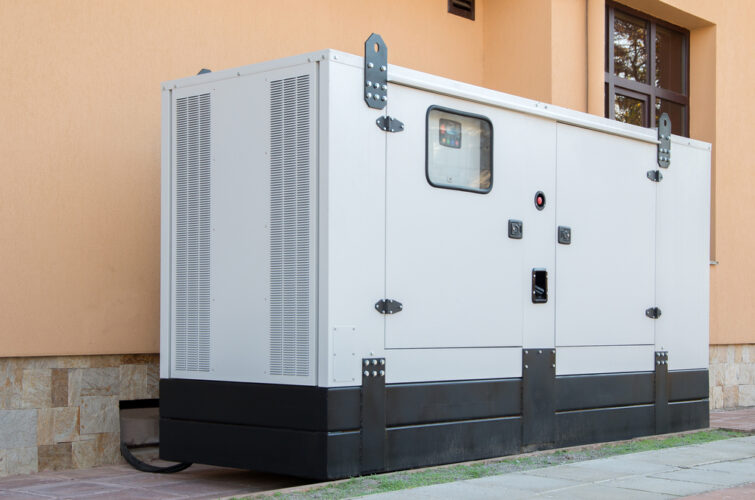Having an emergency source of power is more important today than ever before. Grids are working at max capacity, fuel sources are running low, and the weather is getting more unpredictable.
Installing a standby generator is an advanced-level task and should be done with extreme caution (as with any electrical project that you handle yourself). However, it is a doable DIY project as long as you have some base knowledge about electrical and take your time and closely follow the steps we’re going to cover next. Let’s get into it!
What is a Standby Generator?

Installing a standby generator can add considerable value to any home or business as it provides a dependable power source during power outages caused by storms, natural disasters, or other emergencies.
When the regular power goes out or drops, the generator automatically kicks in and provides the power you need to keep your home or business running.
Most are gas-fuelled, but you can get solar-powered generators, too.
Do You Really Need a Standby Generator?
If you’re unsure about getting an emergency standby generator for your home, let me paint you a picture. A few years back, my home province encountered massive storms, and our power grid went down, leaving more than half our province in the cold darkness for almost a week.
Living without lights isn’t too big a deal, but the outage happened during one of the year’s coldest months. People froze to death. The debacle was so intense that our premier even resigned over the backlash.
But you know what would have helped and even saved lives? If most residents had emergency generators installed in their homes.
Installing a Standby Generator
Here is my detailed list of steps and tips that covers everything you need to know about emergency standby generator installation.
Step One: Choosing the Right Generator
The first step in installing an emergency standby generator is to choose the right one for your specific needs. Several types of generators available would work for a home or small business.
- Portable generators: These are great if you need something small like a 3000-watt generator to power a heating unit or a few appliances.
- Standby generators: Best for a solid backup power source to run your entire house or business.
Portable generators are the most affordable option and are suitable for small power needs, while standby generators are more expensive but provide a more reliable source of power and are better suited for larger power needs.
Step Two: Sizing the Generator
Once you have chosen the right generator, it is important to size it correctly. The generator size should be based on the amount of power you need to run your home or business without overloading it.
The generator should provide enough power to run your essential appliances and devices during a power outage.
Step Three: Installing the Generator
Installing an emergency standby generator requires basic electrical and plumbing skills, so it’s often recommended that you hire a professional to handle the installation.
However, if you’re comfortable working with electrical and plumbing systems, you can easily install the generator.
The installation process:
- First, choose an appropriate location for the generator, ideally near your main electrical panel, and at least 18 inches off the ground. If your porch allows for the weight, you could run it from the porch, but it’s not recommended.
- Next, install the transfer switch, which will control the power from the generator to your home’s electrical system.
- Now, connect your generator to the transfer switch using an electrical wire.
- Run a fuel line from the generator to a steady fuel source, such as a propane tank or natural gas line.
- Connect the generator to the fuel source.
- Finally, test the generator to ensure that it is working properly.
Step Four: Maintenance
Once the generator is installed, you should perform regular maintenance to ensure it’s working properly and prolong its lifespan. This means checking the oil and coolant levels, cleaning the air filter, and running the generator regularly to prevent it from seizing.
I’d like to note that before installing an emergency standby generator, you must check and follow the local codes and regulations to ensure that the installation is properly done and complies with local laws. You can find this on your town or city’s official website.
Additionally, it’s not necessary, but I would consider it important to consult with an electrician or professional to ensure that your generator is properly wired and connected to the transfer switch, as improper wiring can be dangerous and can cause damage to your generator or even start a fire.
Readers Also Ask
What is the difference between a standby generator and an emergency generator?
A standby generator is installed by choice; if you don’t want to live or operate without power in the event of a blackout. An emergency generator is required by code, especially for businesses that provide essential services like gas and medication.
What size generator do I need for emergency use?
You should be looking for anywhere from 6000 to 8000 watts of power to comfortably have enough backup power to run your home or small business.
What is the best emergency home generator?
There are tons to choose from, but Generac offers some of the best for quality and customer service.
Don’t Get Left in the Dark
If you have the necessary skills, installing the generator can save you money and stress. But, I always recommend homeowners consult with professionals or check local codes before installing.
With the right generator and proper installation, you can rest assured that you have a reliable power source during an emergency.